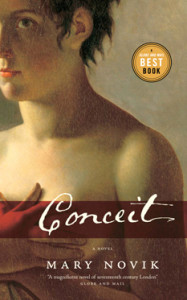
In July 2000, when I was on holiday in Cambridge, England, I stumbled into a wonderful second-hand bookshop and picked up a volume of John Donne’s poetry. It fell open at a well-thumbed page. Obviously, generations of undergraduates had got there before me. I was surprised at how erotic the poem was. I certainly didn’t remember seeing any of those poems in my school anthologies. That gave me the idea of writing a novel about Donne, but I had no idea how to start it.
I began to wonder how John Donne’s children, especially his daughters, would have felt reading his poems. The daughter that interested me most was Margaret, since virtually nothing was known about her. The words “Pegge has the pox” kept echoing in my head from a letter Donne wrote when she was dangerously ill at fifteen. I had been reading and rereading the volume of poems, trying to figure out which ones were written to Ann. What if Pegge had also struggled to order the poems and make a story out of them? What sort of daughter would have been so obsessed with her father’s erotic life? What would Pegge’s own love-life be like, how would it all turn out for her?
Later, visiting St Paul’s Cathedral in London, I stared at Donne’s grandiose effigy–a large marble figure in a shroud with a very odd grin, as if he’s just pulled off a fast one. Everything about it is peculiar, especially the fact that it was the only monument that survived the destruction of the old St Paul’s in the seventeenth century. When the Great Fire began, the booksellers in Paul’s churchyard carried their stock into the crypt for safety, unintentionally fuelling the blaze.
That night, with a grinning John Donne swirling in my head, I had a dream about the holocaust in Paul’s, charred bookpapers flying up into the air, and a daughter with an unhealthy love for her father. At last I had the opening scene for Conceit, Pegge saving her father’s marble statue in the midst of the Great Fire of 1666. What would have driven her to do such a thing? That was another question Conceit would need to answer. It was time to take up my pen and put it to paper.

